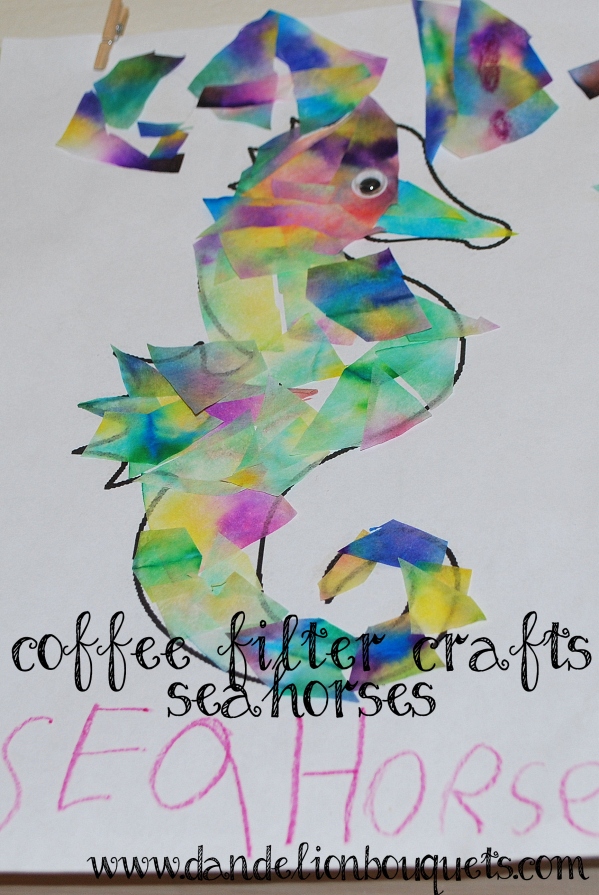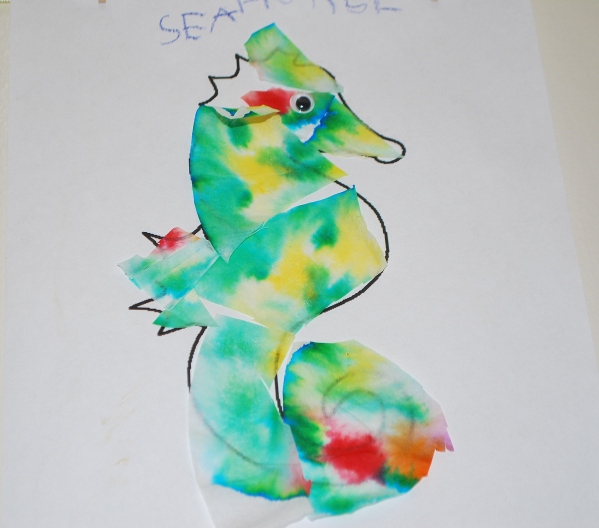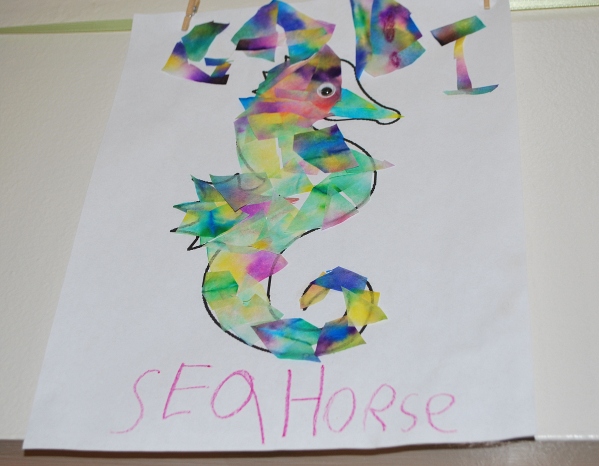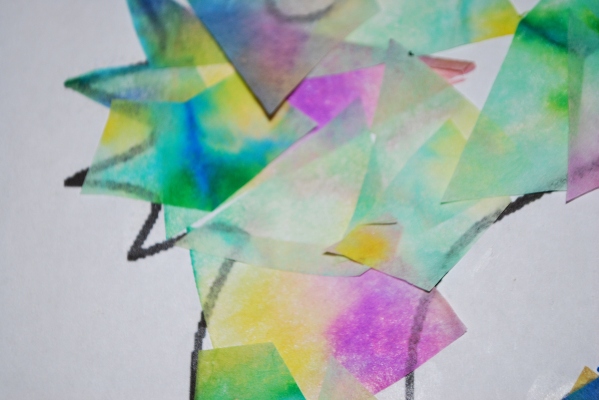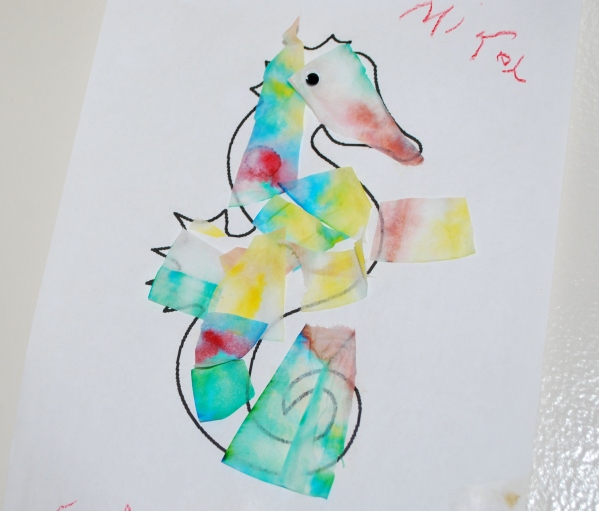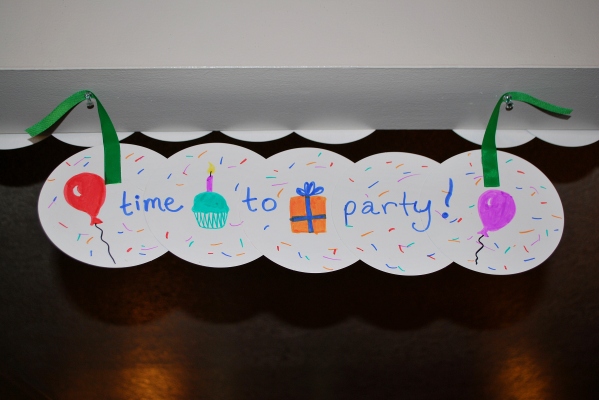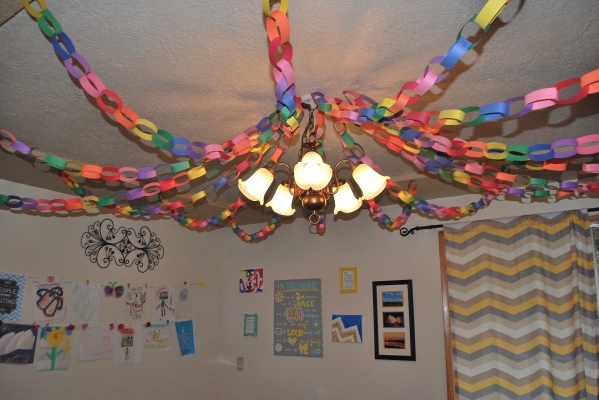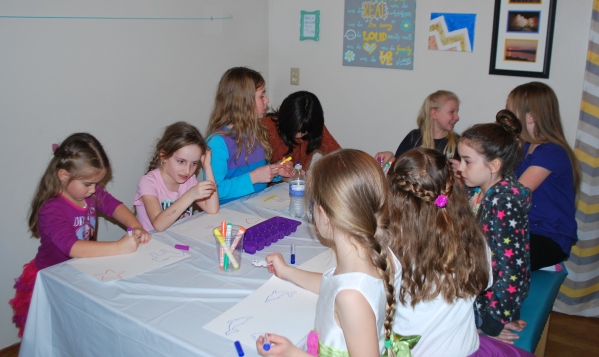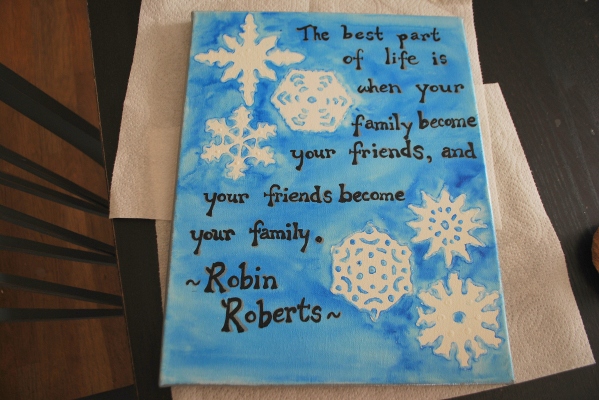If your kids had fun making the coffee filter seahorse craft, they will certainly enjoy adding these jellyfish to their art aquarium. They are made with the same technique of washable markers and water and have long tentacles that sway in the breeze.
The topic of jellyfish made an engaging subject in our ocean animals unit study. As with the seahorses, we borrowed some books from the library to begin our quest for information on these magnificent creatures. (Jellyfish by Louis Spilsbury, Box Jellyfish: Killer Tentacles by Natalie Lunis, and Portuguese Man-of-War: Floating Misery by Natalie Lunis.) We followed these books up with some videos on YouTube so that we could actually see jellyfish in action.
Here are ten things you may not have known about jellyfish before:
1. A jellyfish does not have a brain.
2. Jellyfish come in all sorts of colors: pink, blue, red, even multi-colored.
3. A jellyfish’s body consists of a polyp, or float, on top and many tentacles dangling below. The mouth is underneath the polyp.
4. A jellyfish’s tentacles are filled with toxins used to hurt or paralyze their prey, which can be little fish, other jellyfish, crabs, and plankton.
5. A group of jellyfish is called a bloom, a swarm, or a smack.
6. Some jellyfish can glow in the dark.
7. Jellyfish are a favorite snack of sea turtles.
8. The Portuguese Man-of-War is not actually a jellyfish. It is a group of organisms that live together and function together as a whole.
9. Most jellyfish have a life-span of a few hours to a few months.
10. Jellyfish range in size from very tiny (thumbnail size) to very large (whale size).
Now, let’s make some coffee filter jellyfish.
You will need: 2 coffee filters, washable markers, water, a paintbrush, a paper plate, plastic grocery bags, a stapler, party streamers, and some tape
First, lay your coffee filters one on top of another on the paper plate. Color dots and swirls and scribbles however you like (just like we did when we made the seahorse) on the top coffee filter with the washable markers. Then, with the coffee filters still stacked up on top of each other, paint over the top filter with water until the colors are swirled to your satisfaction.
When the coffee filters are dry, staple the outer edges together as shown, leaving a small opening on one side. Insert the plastic grocery bags into the opening until the polyp is nice and full and then staple shut.
Next, cut varying lengths of your party streamers and tape to the bottom of your coffee filter polyp. (I found a couple of rolls of blue and yellow in the junk drawer, so blue and yellow it was for us!) Use fishing line or thread to hang your jellyfish from the ceiling.
For a short while, we hung our jellyfish in the entrance of our dining room. They added a beautiful pop of color and a touch of movement to the area, but they were too distracting when you had to walk underneath them. We ended up moving our jellyfish to a safer location in a corner of the dining room instead.
Get creative! Think another material besides party streamers would work for the tentacles? Try it and see! As with many other ocean animals, the different types of jellyfish vary widely in shape, size, colors, textures, and even the way they move.
And while you are creating your jellyfish masterpiece, you may want to try reading aloud Jeremiah Jellyfish Flies High by John Fardell. It’s a funny picture book for the kindergarten set but will be sure to entertain the older kids as well.





